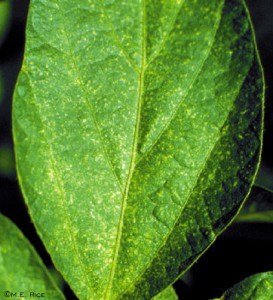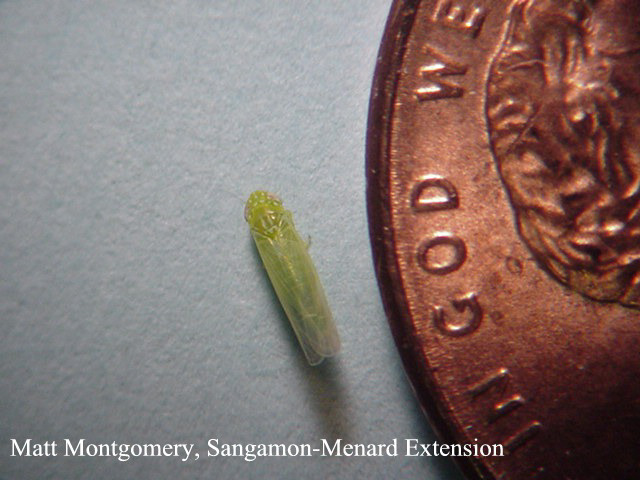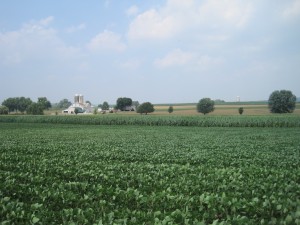Now that corn has become too tall to drive through with a sprayer I have transitioned to soybeans, alfalfa and soil sampling. This transition occurred slowly and for a week or two I was doing a little bit of everything.
The corn fields I had to walk through during these weeks were fields that had been sprayed. My job was to confirm that they had been sprayed and that there were no spray skippers. This wasn’t my favorite part of my job since the corn in July is usually 4 feet or taller and not all that enjoyable to walk through. I actually lost a contact one day after a particularly nasty run in with a corn plant.
My boss likes to have a field’s soil analyzed every three years. Normally, it’s easiest to take soil cores in the spring when the soil is moist but because he covers so much acreage he had me take soil samples from about 40 fields after the wheat was harvested in July. For soil sampling I had to walk an entire field and attempt to take 10-15 samples that I felt averaged out to a good representation of the entire field. For taking samples I used a soil probe and attempted to obtain 6-8 inches of soil in each sample. I found it quite interesting and gained a new appreciation for how much differentiation there is between soil compositions even just throughout Lancaster county. Some fields I had no problem taking 8 inch soil cores and others I had to work at for up to 40 minutes trying to find 10 spots without rocks.
I’ve been checking soybeans for a variety of pests. As the soybeans started to emerge I walked the fields, took populations and took note of what weeds were present. I then went back to each of these fields about two weeks later to confirm that they had been treated. Right now I am scouting these same soybean fields for bugs, particularly spider mites. Spider mites can be detected by a yellow speckling of the soybean leaves. Usually, when you flip those leave over you can find the spider mites. They’re very difficult to see because of their small size but if you look hard enough you can usually find them. When looking for bugs I usually try to check each edge, since that’s where they usually start effecting the plants first, and then do a quick run through the field. If I do find spider mites my boss usually recommends the farmer spray the outer edges of the field and this is usually enough to suppress them.

This photo shows and example of what a soybean leaf looks like when spider mites begin munching on it. This image was obtained from http://www.extension.iastate.edu/news/2005/jul/071501.htm.
Alfalfa is my new favorite crop to scout. I search for weeds as I walk through the field but my main priority is searching for leafhoppers. To do this I use a sweep net and sweep through the field seven or eight times, count the number of leafhoppers I find and then take the average of those numbers. This is pretty important because leafhoppers can do significant damage to a stand of alfalfa.

This is a photo of a leafhopper. Image obtained from http://www.aces.uiuc.edu/news/News_Photos/PL/content/potato%20leafhopper%20May%202006_large.html.
That’s what I’m up to right now. I’m looking forward to learning how to take corn yields in the next week or two and I recently attended a field day at Penn State but I’m going to save that and include it in my next post.


Speak Your Mind